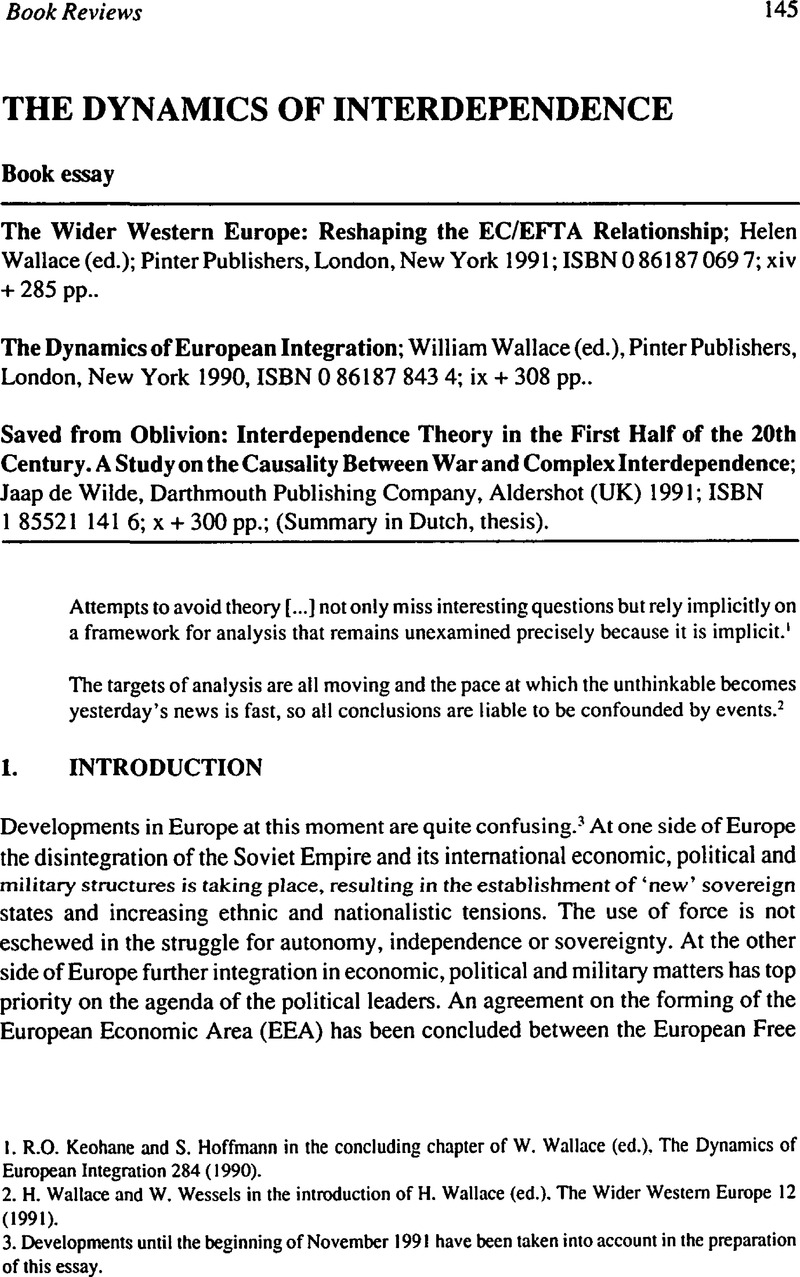No CrossRef data available.
Published online by Cambridge University Press: 21 July 2009

1. Keohane, R.O. and Hoffmann, S. in the concluding chapter of W. Wallace (ed.). The Dynamics of European Integration 284 (1990).Google Scholar
2. Wallace, H. and Wessels, W. in the introduction of H. Wallace (ed.). The Wider Western Europe 12 (1991).Google Scholar
3. Developments until the beginning of November 1991 have been taken into account in the preparation of this essay
4. The European Free Trade Association (EFTA) now consists of Sweden. Norway. Finland. Iceland.Austria, and Switzerland. The original members were the UK. Sweden. Norway. Denmark. Austria Switzerland and Portugal. Finland became an associate member in 1961 and Iceland became a member in 1970. Liechtenstein applied for membership in March 1991.
5. Austria and Sweden have already applied for membership: Switzerland and Finland are expected to follow soon.
6. The European Commission has asked the European Court of Justice an advisor)' opinion on the compatability of the EEA agreement with the EEC Treaty (Anicle 228 EEC). See the postscript to this essay.
7. William Wai lace in his introduction to The Dynamics of European Integration presents a useful ‘definition’of such strategic integration: "Political institution-building as a strategy [was]: to promote economic integration, in the expectation that social integration would accompany ii. that the interests and loyalties of elites-at least-would thus be progressively transferred from each nation-state to the broader institutionalized community, which would in turn ‘lay the foundations’ “for an eventual political union” (p. 1).
8. The first agreements in which the EFTA acted as a group, the Convention on Simplification of Formalities in Trade in Goods and the Convention on a Common Transit Procedure, were concluded between (he EC Commission and the EFTA ministers in May 1987.
9. See for a discussion of the EC relations with Central and Eastern Europe: The Community and the Emerging European Democracies; A Joint Policy Peport, published by the Royal Instituteof International Affairs (1991). A Dutch translation has been published in: 14 Internationale Spectator 505–554 (1991).